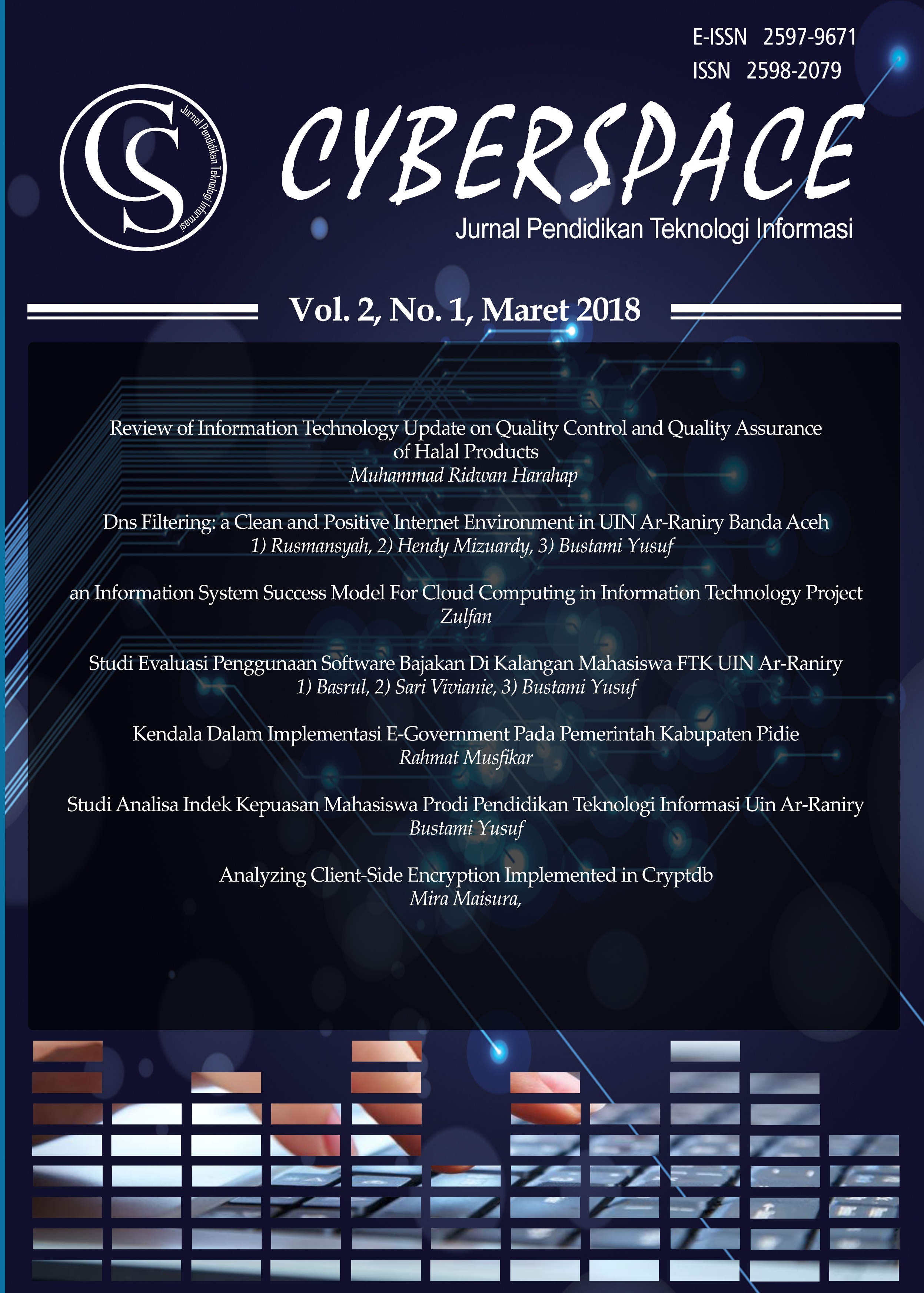REVIEW OF INFORMATION TECHNOLOGY UPDATE ON QUALITY CONTROL AND QUALITY ASSURANCE OF HALAL PRODUCTS
DOI:
https://doi.org/10.22373/cs.v2i1.2481Keywords:
pattern, imagery, product, halalAbstract
Technological developments are very rapid but it does not necessarily with the renewal of information technology to the public due to the limited differences in public interest. Indonesia is one of the most populous countries in the world with the majority of the Muslim population. In line with that, the Muslim community highly upholds the values of Islamic teachings contained in the Qur'an one of the concept of Halalan Toyyiban. Information that is rarely accepted by the public is the halal principle of an industrial product, whether food, beverage, cosmetic or other manufacturing industries. This is also supported by the human lifestyle factors on goods from outside the country regardless of the origin of the goods. As a predominantly Muslim country, it is necessary to have simple and accurate information on the use of materials in an industrial product to determine the absence of an industrial product. One of them is the use of derived compounds or single compounds derived from pigs. From several research results that have been done, obtained the image pattern from the examination result of the sample. So that people can easily obtain information about the source of materials used in everyday life.References
W. Montagna and J. S. Yun, “The Skin Of The Domestic Pig,†J. Invest. Dermatol., vol. 170, no. 1, pp. 11–22, 1963.
D. C. Carrer, C. Vermehren, and L. A. Bagatolli, “Pig Skin Structure And Transdermal Delivery Of Liposomes : A Two Photon Microscopy Study,†J. Control. Release, vol. 132, no. 1, pp. 12–20, 2008.
K. A. Abeng, S. J. R. Kalangi, and S. Wangko, “Gambaran Struktur Kulit Hewan Coba Pada Beberapa Interval Waktu Postmortem,†J. e-Biomedik, vol. 4, no. 1, pp. 7–10, 2016.
M. E. S. Mirghani, H. M. Salleh, Y. B. C. Man, and I. Jaswir, “Rapid Authentication of Leather and Leather Products,†Adv. Nat. Appl. Sci., vol. 6, no. 5, pp. 651–659, 2012.
A. Guntarti, A. Rohman, S. Martono, and A. Yuswanto, “Autentikasi Lemak Celeng Dengan Kromatografi Gas- Spektroskopi Massa Yang Dikombinasikan Kemometrika PCA ( Principle Component Analysis ),†in Rakernas dan Pertemuan Ilmiah Tahunan Ikatan Apoteker Indonesia, 2016, pp. 57–63.
O. Dahimi, M. S. Hassan, A. A. Rahim, S. M. Abdulkarim, and S. M. A, “Differentiation of Lard from Other Edible Fats by Gas Chromatography- Flame Ionisation Detector ( GC-FID ) and Chemometrics,†J. Food Pharm. Sci., vol. 2, pp. 27–31, 2014.
A. Rohman, K. Triyana, Sismindari, and Y. Erwanto, “Differentiation Of Lard And Other Animal Fats Based On Triacylglycerols Composition And Principal Component Analysis,†Int. Food Res. J., vol. 19, no. 2, pp. 475–479, 2012.
S. Hermanto, A. Muawanah, and R. Harahap, “Profil dan Karakteristik Lemak Hewani (Ayam, Sapi dan Babi) Hasil Analisa FTIR dan GCMS,†Valensi, vol. 1, no. 3, pp. 102–109, 2008.
M. Povalo and G. Contarini, “Analysis of Triglycerides in Butter and Lard Using An MET-Biodiesel GC Column,†Eur. J. Lipid Sci. Technol., vol. 110, no. 11, pp. 1050–1057, 2008.
E. Kurniawati, A. Rohman, and K. Triyana, “Analysis Of Lard In Meatball Broth Using Fourier Transform Infrared Spectroscopy And Chemometrics,†MESC, vol. 96, no. 1, pp. 94–98, 2014.
Downloads
Published
Issue
Section
License
Authors who publish with Cyberspace Journal agree to the following terms:
- Authors retain copyright and grant the journal right of first publication with the work simultaneously licensed under a Creative Commons Attribution License that allows others to share the work with an acknowledgement of the work's authorship and initial publication in this journal.
- Authors are able to enter into separate, additional contractual arrangements for the non-exclusive distribution of the journal's published version of the work (e.g., post it to an institutional repository or publish it in a book), with an acknowledgement of its initial publication in this journal.
- Authors are permitted and encouraged to post their work online (e.g., in institutional repositories or on their website) prior to and during the submission process, as it can lead to productive exchanges, as well as earlier and greater citation of published work (See The Effect of Open Access).



















